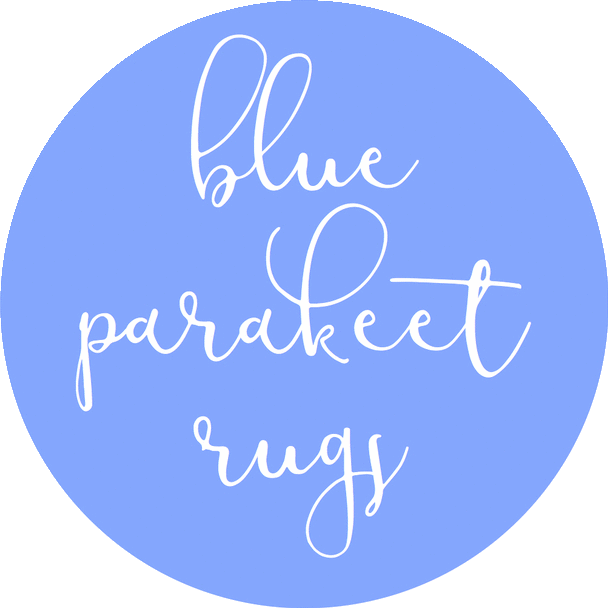Antique vs. Vintage Rugs: What’s the Difference, and Why Should You Care?
photo by Sheba K.
If you’ve been poking around the world of old rugs, you’ve probably come across the terms antique and vintage and wondered, “Wait…aren’t they kind of the same thing?” Totally fair question, but nope, not quite. There’s a big difference, and if you’re looking to invest in a rug that holds history and beauty, it’s worth knowing what’s what.
Let’s break it down, Blue Parakeet style.
What’s Antique?
In the rug world, antique generally refers to pieces made in the 1930s or earlier. These are truly old souls, woven by hand, often in the home, on a ground loom, and mostly by women who knew exactly what they were doing. They were using vegetable dyed wool, made from natural materials like roots, flowers, insects, and minerals. These dyes were painstakingly prepared; cooked slowly, layered, washed, and set, and the result is color that is both stable and soulful.
Unlike synthetic dyes, vegetable dyes don’t bleed when properly washed. They age like a dream, softening into subtle tones with grace instead of fading into sad ghosts of their former selves. These dyes have depth. You’ll see layers, variations, and that magic thing we call abrash (those shifts of shade that tell you it's the real deal).
And the rugs themselves? They weren’t cranked out overnight. Many took months, sometimes years to weave. Antique rugs are textile art from a bygone era, made with serious intention. They carry history, craftsmanship, and that ineffable magic that only comes from age and patience. Want to see some in the wild? Browse our antique rug collection to get a feel for the age, patina, and patience woven into every piece.
What About Vintage?
Vintage typically refers to rugs woven from the 1940s through the 1970s (and sometimes early 80s). These are still old and handmade, and many are drop-dead gorgeous. But here’s the kicker, the key difference is that most vintage rugs are made with synthetic dyes (or sometimes a combo of both veggie and synthetic, depending on the region and time period).
And while that doesn’t mean they’re “bad,” it does mean you’ll notice a few things:
Synthetic dyes can bleed when washed.
They tend to fade in sunlight.
The colors may be bolder or brighter, but often flatter, without the layered tone and slow evolution that veggie dyes offer.
Some weavers in certain villages did continue to use natural dyes into the 1940s and even beyond, but it became rare. You really need a trusted rug shop to help guide you, because the terms vintage and antique get tossed around pretty loosely online, and not everyone is being honest about what they’re selling.
Vintage rugs still have their charm, especially those with cool design quirks or mellow wear, but they’re not from that same hand-crafted, root-dyed, legacy-rich era that antique rugs come from. Btw, if you like them showing a lot of life and history, here are some worn ones in the collection.
What Does Blue Parakeet Rugs Carry?
We carry both, but let’s be real: I like them super old. So 99% of the collection is antique. The kind of rugs that have real patina, natural dyes, and that warm, well-earned character that only time can give. They are the kind of rugs that only look better with age. If you’ve come this far and perhaps want to look around and dream a little rug dream, here’s another opportunity to see what Blue Parakeet Rugs has in the rug vault.
photo by Sheba K.
And you might see the word vintage in some of the listing titles, and I’ll be honest with you, that’s mostly for the search engines and the weird rules of the internet. It helps people find us out there on the worldwide web because “vintage rug” is the lingo folks are out there hunting for, clicking, googling, pinning, and dreaming about–so we play the game a little. But, the actual age, dye type, and important details are all clearly explained in the listing. If it’s vegetable dyed wool, I’ll tell you. You’ll know exactly what kind of rug you’re bringing home. These aren’t just floor coverings. They’re stories. They’re souls. They’re the foundation of whatever feel you’re building in your home. And if you can’t tell, I am pretty passionate about them!
If you’re ready to find your piece of history, poke around the shop or reach out. I’m always happy to help you find the one.




